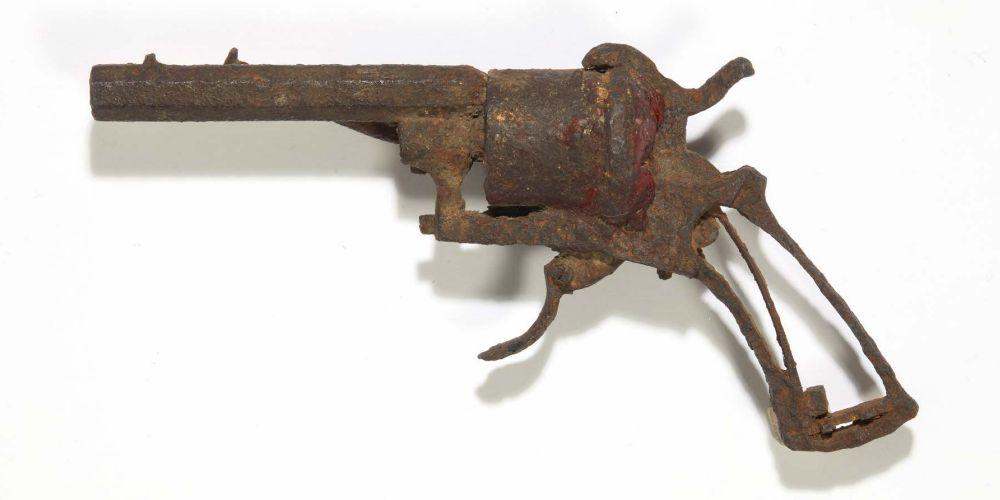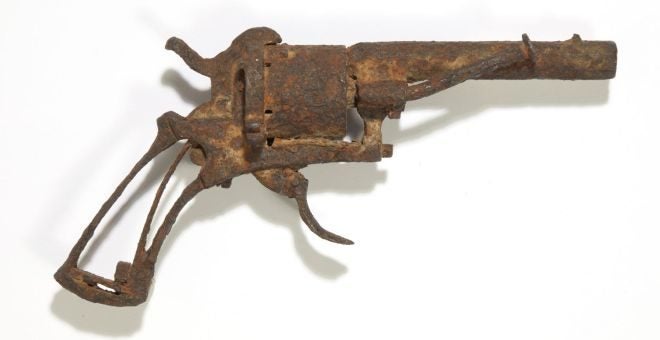It’s broken, it’s completely covered in rust, it’s non-restorable – would be only useful as a paperweight if not the history behind this 7mm pinfire revolver. Attributed to Vincent van Gogh, this is probably the gun that the great artist used to commit suicide by shooting himself in the chest and ending his life in 1890. This revolver is auctioned at Druout Auction House in Paris, France and has an estimated price of €40,000 – €60,000.

If you have been following our series of articles dedicated to the most interesting and expensive firearms auctioned in Morphy (James D. Julia) and Rock Island auction houses, then you have probably seen multiple times that a firearm that is otherwise insignificant and in poor condition becomes a highly sought after item by collectors due to the fact of having belonged to some historical figure. This is a perfect example of such a gun. Here is Druout Auction House‘s description of this lot in full:
The emblematic Dutch artist of the 19th century moved in Auvers-sur-Oise in the South of France in 1890. He lived in room number 5 of Arthur Ravoux’s inn. At this time, Vincent Van Gogh was at the top of his art, he produced over a painting a day, but was mentally unstable.
That same year, on Sunday 27 July, he went to a field behind the village church and shot his own chest. He lost consciousness and woke up at dusk, seriously injured. He went back to the inn where he died 2 days later.
The gun offered in this sale was found in this field by a farmer around 1960 and was handed to the current owner’s mother. Writer Alain Rohan investigated this case and wrote the book “Did we find the suicide weapon?” in 2012. Several pieces of evidence show it must be Van Gogh’s suicide gun: it was discovered where Van Gogh shot it; its caliber (7 mm) is the same as the bullet retrieved from the artist’s body as described by the doctor at the time; scientific studies demonstrate that the gun had stayed in the ground since the 1890’s and finally, it is a low power gun so it could explain why Van Gogh didn’t instantly die after shooting it.
Another theory about Van Gogh’s death appeared in 2011. According to 2 American researchers, the artist didn’t kill himself. He would have been the victim of an accident. 2 young boys were playing with a gun next to him when one of them pressed the trigger by mistake and wounded him. However, even if this assumption is right, the weapon could still be the one that killed Van Gogh. The gun would have been left in the field.
In 2016, the Van Gogh Museum in Amsterdam exhibited this gun during the exhibition “On the Verge of Insanity. Van Gogh and his illness.”
Images courtesy of Drouot Auction House (www.drouot.com)
 Your Privacy Choices
Your Privacy Choices
